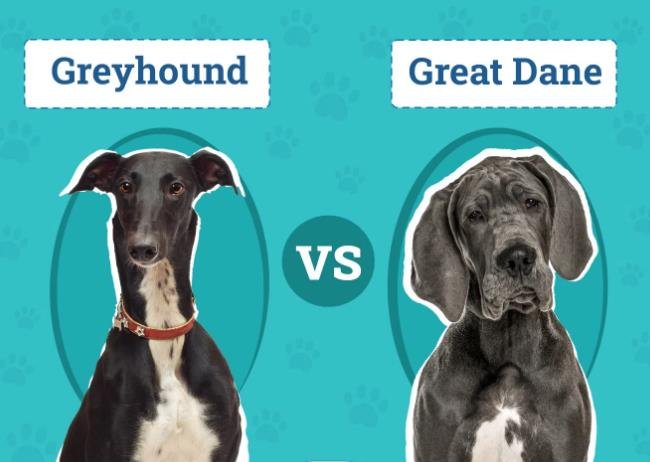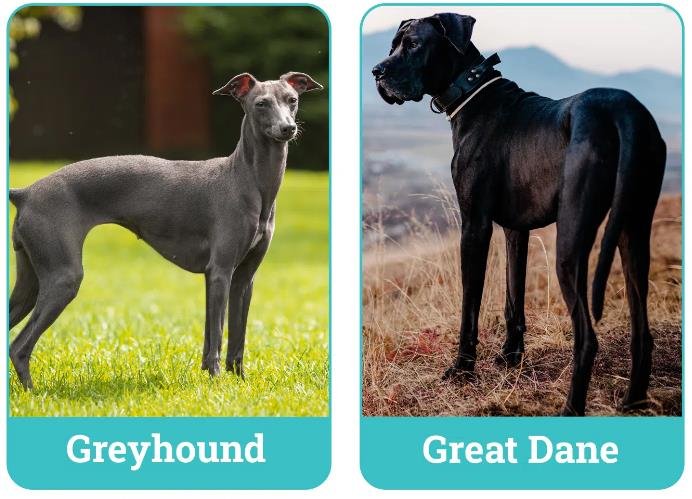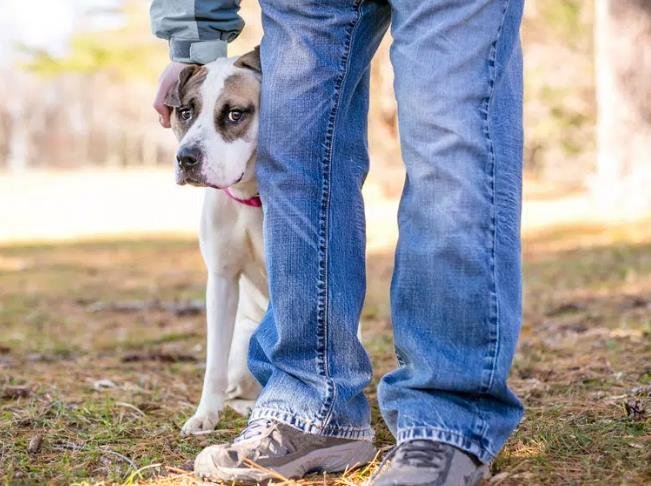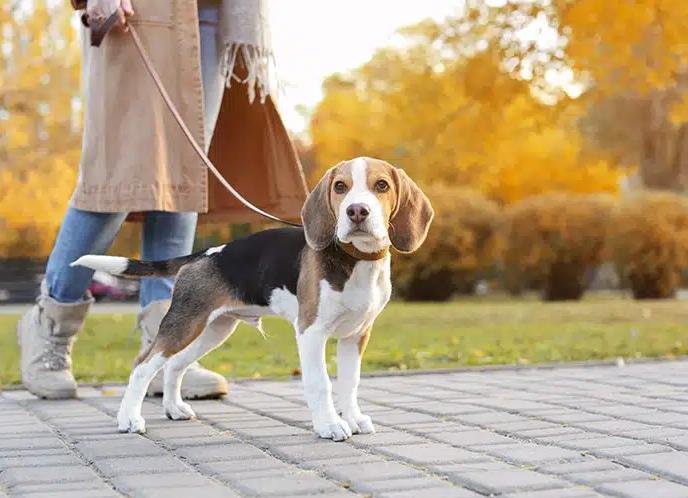Quick Intro: Choosing between a Greyhound and a Great Dane? These gentle giants share short coats and playful hearts—but their differences could decide your next furry soulmate. Let’s break down what makes each breed special!

🐾 Size Showdown: From Sleek Sprinter to Towering Titan
- Greyhound
• Height: 25–30 inches (like a coffee table with legs) • Weight: 50–85 lbs (think: a very fit human toddler) • Speed: 45 mph bursts—outruns most cars on city streets! • Lifespan: 10–15 years (the marathoners of doggy longevity). - Great Dane
• Height: 28–32 inches (taller than Tom Cruise!) • Weight: 110–175 lbs (basically a baby moose) • Speed: 30 mph short sprints (still faster than Usain Bolt). • Lifespan: 7–10 years (their giant hearts burn bright but fast).
Fun Fact: Great Danes were medieval boar hunters, while Greyhounds starred in Egyptian hieroglyphs.
🧠 Personality Playbook: Couch Potato vs Gentle Goofball
• Greyhound:
“Retired racers” are professional nappers who crave 20-minute zoomies followed by 22-hour naps. They’re sensitive souls—think of them as introverts who bond deeply with 1–2 humans.
Warning: That prey drive turns squirrels into mortal enemies.
• Great Dane:
The ultimate “gentle giant”—imagine a 150-lb lapdog who thinks your bed is their throne. They’re social butterflies, greeting strangers with slobbery smiles.
Quirk: Their wagging tails can clear coffee tables (“happy tail syndrome” is real!).
🏃 Exercise Essentials: Speed vs Stamina
• Greyhound:
1 daily sprint in a fenced area + short walks. Pro tip: Avoid dog parks—they’ll either outrun everyone or nap under a bench.
• Great Dane:
30–60 mins of walks (no jogging until age 2—their joints grow slower than their puppy enthusiasm!).
2025 Trend Alert: GPS trackers for Greyhound sprints, orthopedic beds for Dane naps.
🩺 Health Headlines: What Every Owner Must Know
- Shared Risks:
• Bloat: Both breeds need slow-feeder bowls. Emergency gastropexy surgery costs 3k–5k. - Breed-Specific Issues:
• Greyhounds: ◦ Anesthesia sensitivity (tell your vet!) ◦ Paper-thin skin—even scratches need vet glue. • Great Danes: ◦ Wobbler syndrome (neurological neck issues) ◦ Heart disease (get annual echocardiograms).
Lifespan Hack: Greyhounds thrive on fish oil for joint health; Danes need glucosamine supplements from puppyhood.

👨👩👧👦 Family Fit Test: Which Breed Matches Your Life?
Choose Greyhound If:
✅ You’re a first-time owner
✅ Want a low-maintenance “apartment athlete”
✅ Have older kids (toddlers might startle them)
Choose Great Dane If:
✅ You’ve raised large breeds before
✅ Crave a goofy, kid-friendly shadow
✅ Can handle vet bills (giant size = giant costs)
Dealbreaker Alert:
• Greyhounds: Not safe with cats/small pets.
• Danes: Might knock over Grandma during zoomies.
💡 Pro Tips for 2025 Owners
- Greyhound Gear:
• Heated jackets (they shiver below 60°F) • Martingale collars (their heads are smaller than their necks!). - Dane Must-Haves:
• XXL car harnesses (no trunk rides—they need backseat thrones) • Tail protectors (avoid “happy tail” blood splatters).
Final Thought: Greyhounds are the introverted athletes; Danes are the extroverted gentle giants. Both will steal your heart—but your living room space (and vet budget) might decide the winner!







